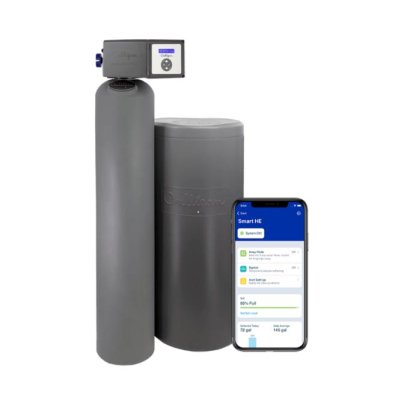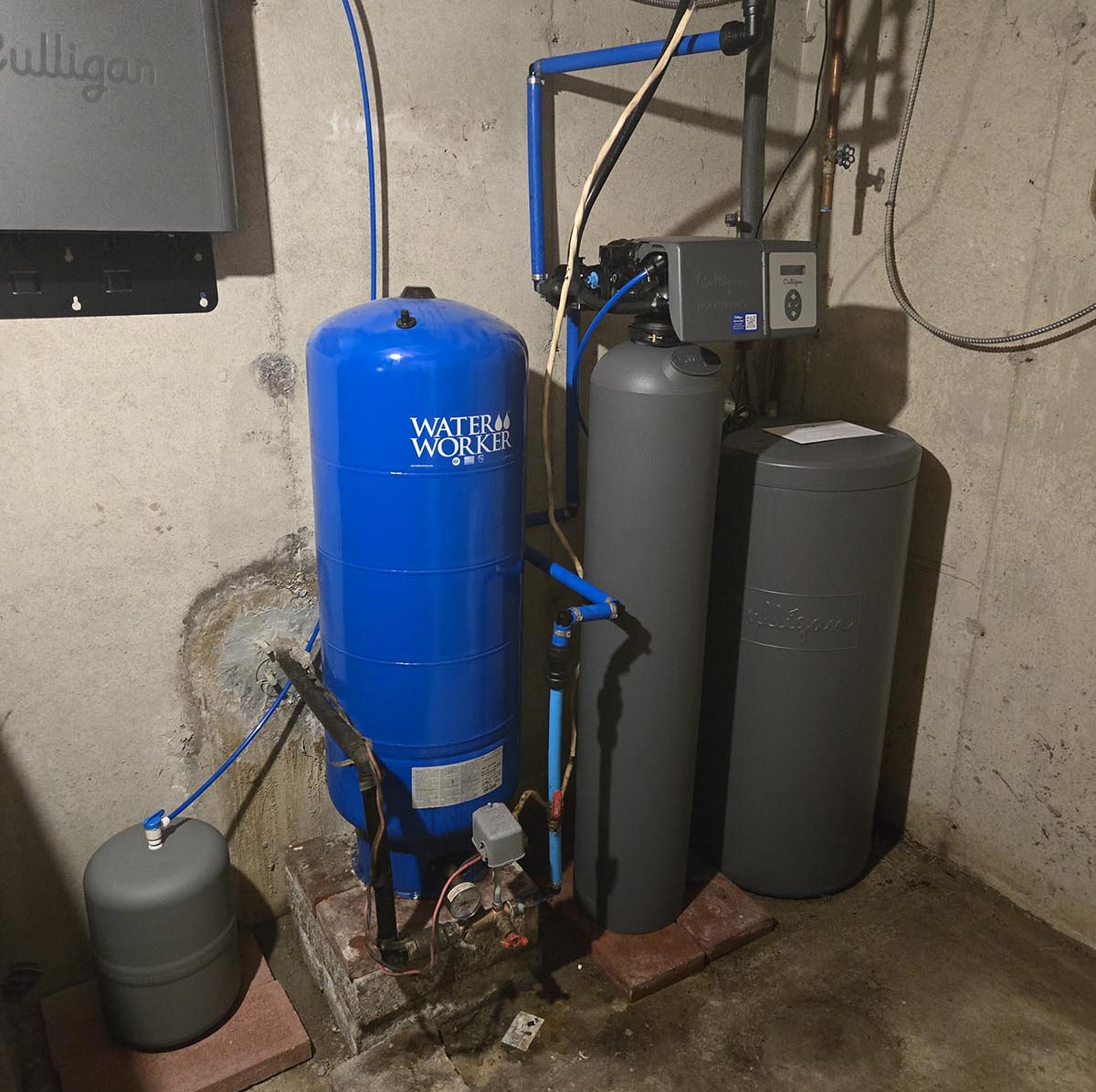

We may earn revenue from the products available on this page and participate in affiliate programs. Learn More ›
I’ve lived with well water for 9 years now, but there was a time when it was a completely new experience to me. Hard water was something I had never dealt with at my last place, which used city water. So, I did my homework. And when I started noticing signs that the water-softening unit that our previous owners installed was becoming a bit inefficient, as we started to go through salt quicker than normal, I knew I had to take it seriously. Hard water can wreak havoc on your home’s plumbing, fixtures, appliances, and shorten the lifespan of some pretty pricey components.
Telltale signs of hard water include mineral buildup on fixtures, dishes, and appliances, along with soap scum in showers and sinks. If your home has hard water, you may also experience extremely dry skin and dry or damaged hair.
We were already familiar with the Culligan brand of water softeners, which is what the previous owners had installed about 15 years ago. Culligan is an industry leader in water solutions and customer service, in the business for 89 years. We kept the service when we moved into the home and have had great service over the last 9 years. (Case in point: They make maintenance easy by offering salt delivery on a set schedule to ensure you never run out of salt for your brine tank.) My older model was a workhorse, but it was nearing the end of a water softener’s typical lifespan. So when given the opportunity to install a new model, I had no hesitation.
Choosing the Right System
The key to managing hard water in your home is choosing the right system for your home’s needs. Culligan offers a plethora of water softening systems and alternative solutions across two main types: salt-based and salt-free systems.
- A salt-based water softening system removes the minerals (calcium and magnesium), resulting in soft water. It’s the most effective solution for households with moderate to extreme hard water. The system uses a process of ion exchange with negatively charged resin beads, which interact with the positive sodium ions. The sodium ions attract the hard minerals, and the hard minerals replace the sodium ion, causing the sodium (salt) to enter the water and become soft.
- Salt-free water systems are alternatives designed for those who may lack space near an electrical outlet for a tank containing the brine (a concentrated salt solution). These units do not require electricity to operate, making them fairly low-maintenance. Salt-free systems neutralize contaminants to reduce scaling in plumbing, but they do not remove them and may not be the best option for households with true hard water.
The right system depends on your exact needs and the size of your home. Culligan offers a free in-home water test and consultation to help determine the right system for your home’s needs.
I figured that my well water would be at least moderately hard, and that’s why the last owners selected a salt-based system. But, as my replacement water softener is technically the first system I have personally selected and installed, I took the brand up on this and scheduled an initial consultation. Here’s how it went.
Initial Consultation
First, it’s worth mentioning that I was able to schedule an initial consultation within a week of calling—faster service than I’ve had with requests to other service companies in the recent past. My local office had plenty of open appointments that fit my schedule.
The consultation lasted about an hour, including water testing with my existing softener running and without. The Culligan representative showed me just how hard my water was and made a recommendation based on the test results. I really appreciated how informative and knowledgeable the representative was during this consultation. He took his time to answer all of my questions, explain what each test was for, and walk me through what the results meant. Even if this was my first rodeo with water softeners, I’m sure I’d feel more confident in understanding the diagnosis and what I would be investing in as a result.
For background, hard water is measured by grains per gallon (GPG), with grains representing mineral quantity.
- Water with a GPG level of less than 3.5 is considered soft.
- Moderately hard water falls within the 3.5 to 7 GPG.
- Hard water is 7 to 17.5 GPG.
- Very hard water is 17.5 GPG and above.
My water came in at a whopping 20 GPG. To deal with its extreme hardness, we needed a salt-based water softener with a dedicated brine tank.
The representative also tested my water for iron, total dissolved solids (TDS), and pH level. My untreated water showed iron was at an acceptable level of 0.2 parts per million, with TDS levels recorded at 218 parts per million (within the acceptable range of 50 to 300 ppm) and a perfectly balanced pH of 7.0.
After reviewing the results and consulting with the representative, we decided the new Aquasential Smart High Efficiency Water Softener was best for my home.
Culligan provided the unit for my test, but for my particular setup to be installed in Troy, NY, we’re looking at a range of $2,500 to $5,500, depending on tank size needed, accessories, and installation. Culligan also offers equipment rentals, for which this same setup might range from $55 to $120 per month. For the most accurate pricing for your solution in your area—including financing options—schedule a free consultation.
Install Day
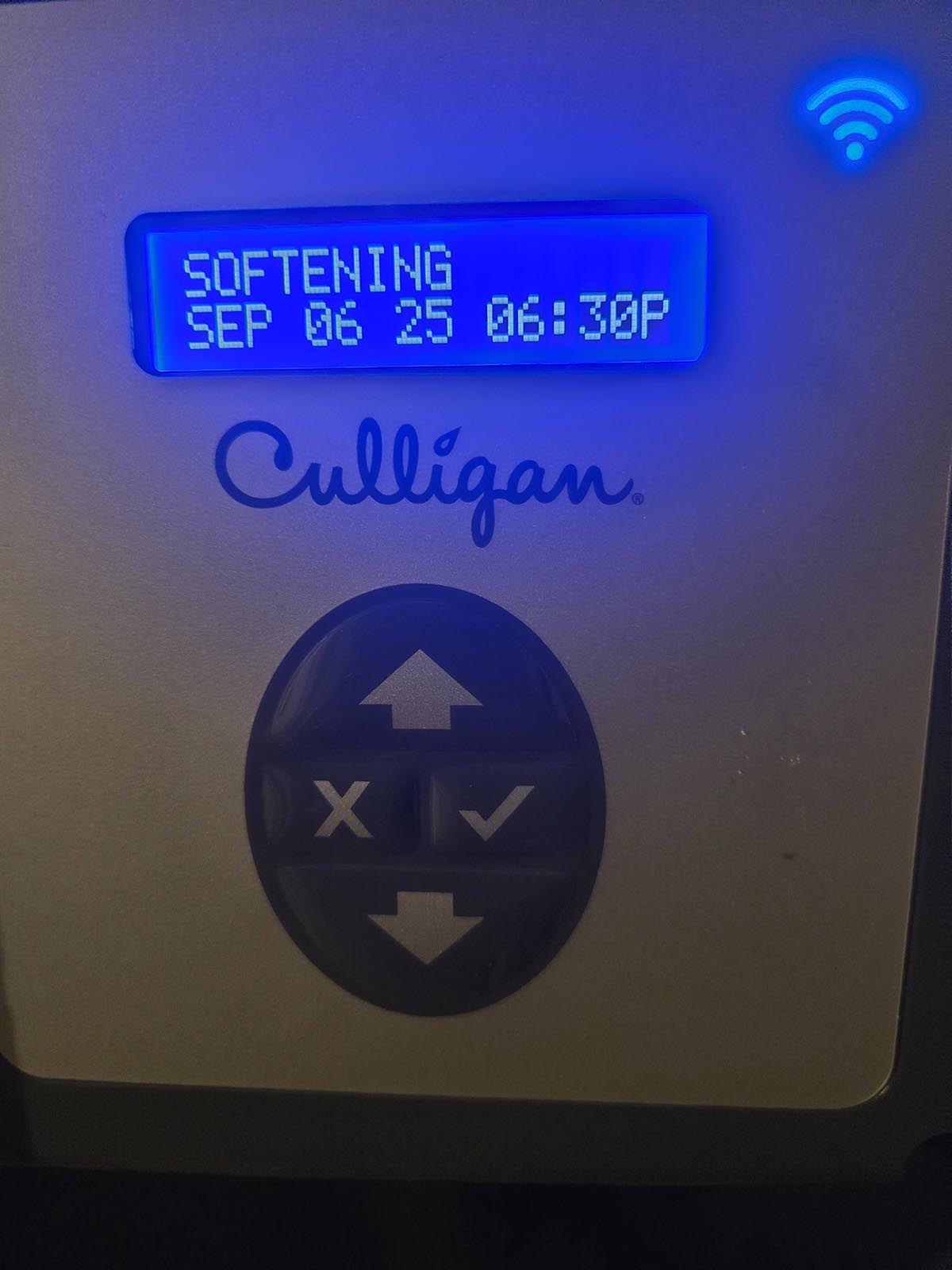
The installation went off without a hitch. The date was set within 2 weeks of the initial consultation, and the installer arrived as planned and right on time. He removed my old system, brought in the new model, and replaced the water lines from the old system to the new system. He worked efficiently and cleaned up after himself. The whole process took about 3 hours—I hardly knew he was there. Part of that speed comes from already having plumbing set up to accommodate a water softener. If you’re installing a brand new system, I would recommend planning for at least a 4-hour installation, from start to finish.
Living with the System
While I’ve used a water softener system for nearly a decade now, Culligan’s newer, high-efficiency model was a huge step up from the last model. A lot can change in water softening technology in 15 years, so it’s smart not to delay when your appliance is nearing the end of its working life.
For starters, like a growing number of home appliances, the Aquasential Smart High Efficiency Water Softener pairs with a user-friendly mobile app, which makes monitoring the system easy. The Culligan Connect app sends me alerts when my salt level drops or if there are any error codes, and it even allows me to set my preferred softness level. This became my favorite feature, since periodically checking the salt level was often a forgotten chore. I would remember to check the salt level when I found my hair or skin becoming dry. Thanks to the smart softener and connected app, I can quickly check the current level and set notifications to remind me to add salt before it gets too low.
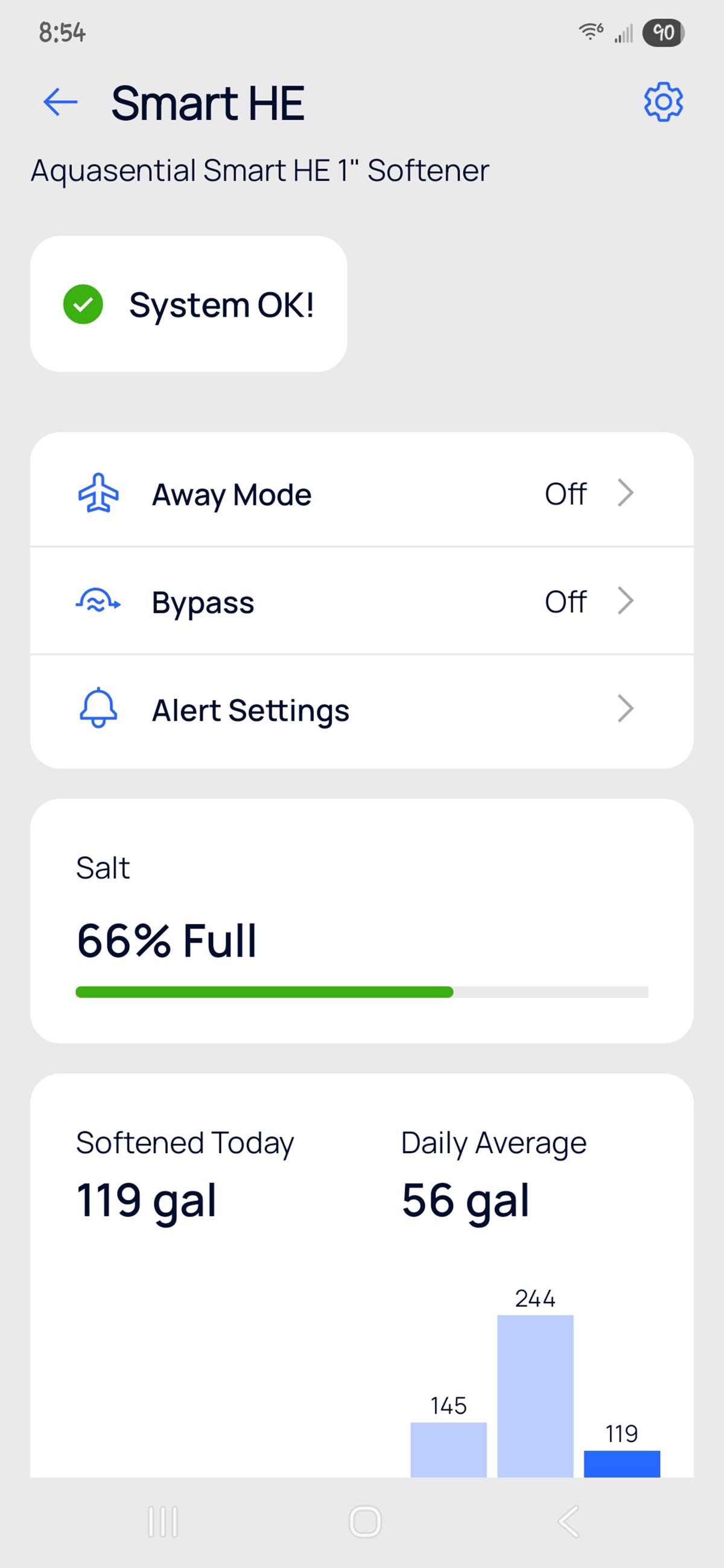
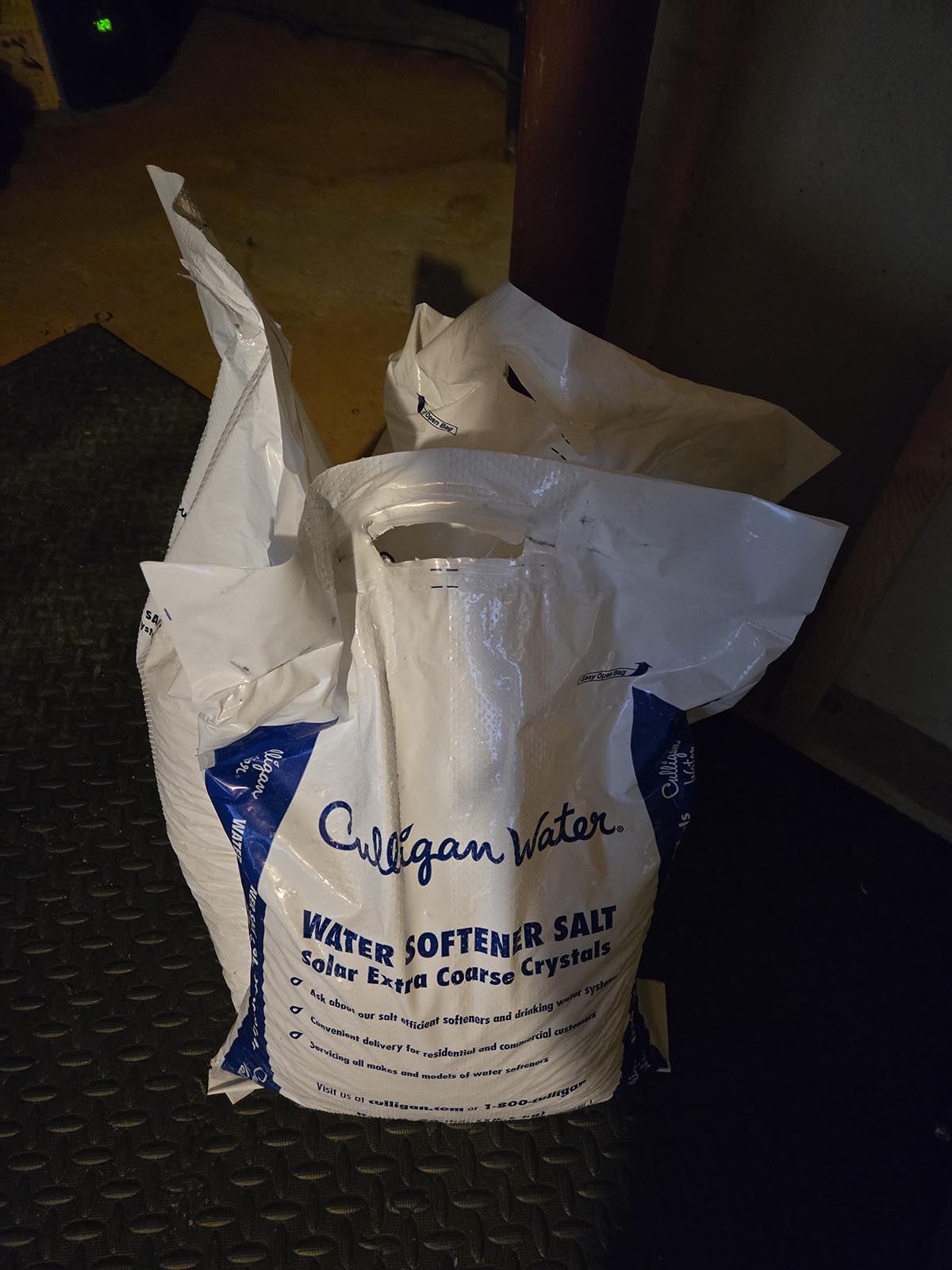
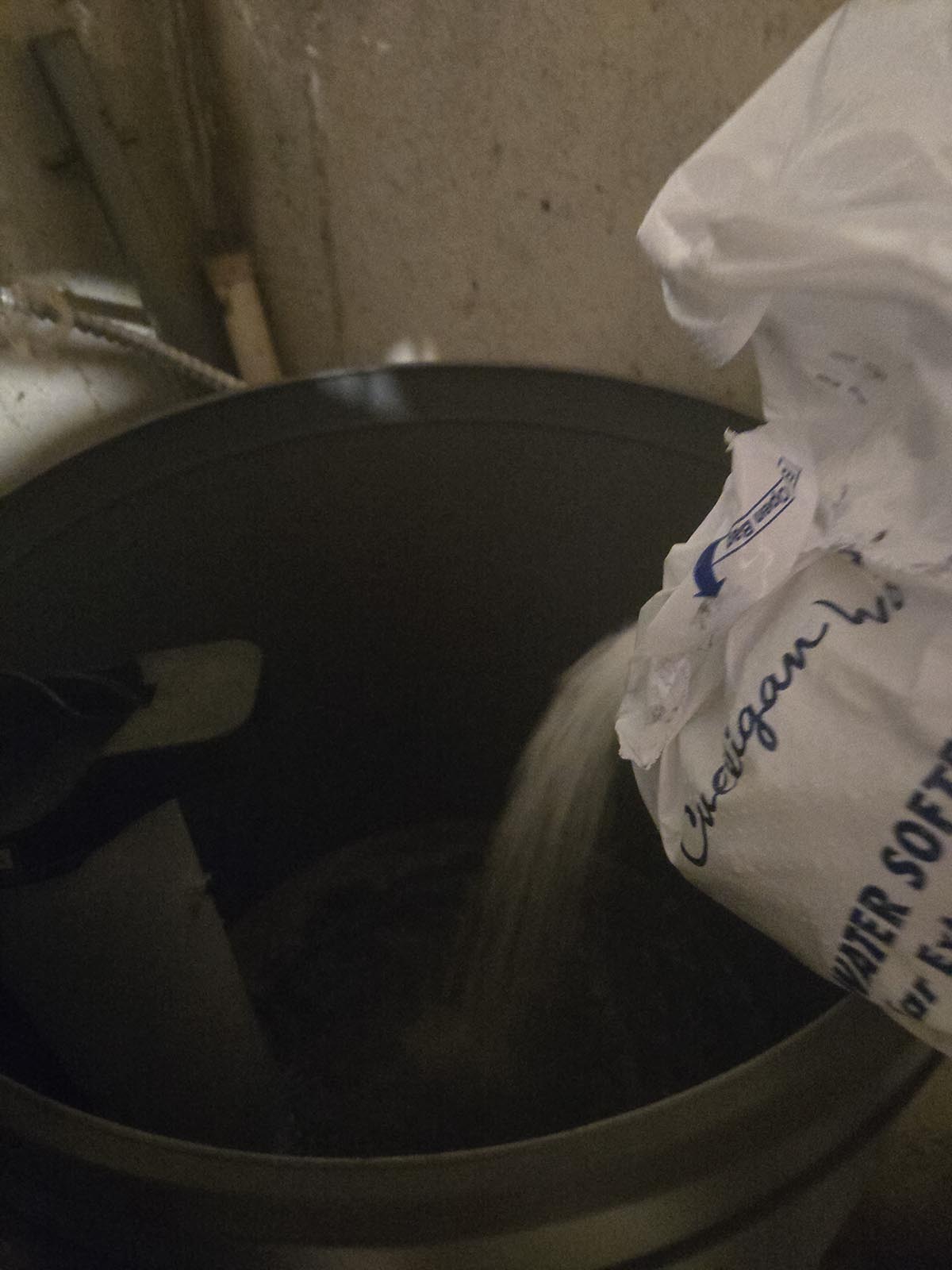
Another upgrade is Culligan’s patented Aqua-Sensor technology, which is great for regions where hardness fluctuates. This feature automatically adjusts the salt used when the system detects changes in water hardness and prompts the system to regenerate only as needed. Regeneration is the process through which all salt-based water softeners flush the resin beads that attract and remove hard water minerals from your water using brine, and most systems run this after a certain amount of time or water has been treated. Aqua-Sensor technology makes for a more efficient system with less regeneration: The less the system has to regenerate, the less salt is used, and overall, less wastewater is produced.
Even after just a day of using the new system and allowing it to refill, I was surprised at how soft my water felt. The new system is more efficient and softens water with ease. Properly softened water often feels almost silky or slippery to the touch, and that’s exactly what I noticed. My hair was softer, my skin was less dry, and best of all, no white spots on my dishes and no soap scum buildup.
About a week after the install, I retested the water’s hardness and was happy to see that my hardness level was consistently measuring 1 to 1.5 GPG.
As with any salt-based water softener, this isn’t a totally hands-off process going forward. I’ll need to continue to reorder and replenish salt, but the Culligan team makes even that easy thanks to its delivery service. So far, from installation to daily usage, Culligan has impressed. The peace of mind knowing that my pipes and appliances are safe makes the investment in a smart whole-house water system well worth it.
